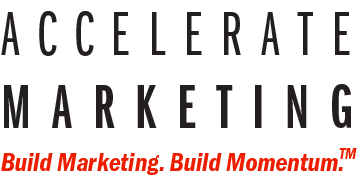Failure to Launch: 5 Reasons Product Launches Fizzle
Photo credit: Copyright 2012 New Energy Times
Are you one of the many companies that have recently released new or enhanced products or services or are preparing to launch new offerings later this year? Recently, I was talking to a company getting ready to release several new products this fall using a product launch plan (their first ever!), I thought it might be timely to highlight five common reasons product launches fail and how to avoid that fate. Hopefully you won’t fall prey to any of these!
5 Reasons Product Launches Fail and Products Don’t Sell
“It’s a Can’t Miss ‘Cutting Edge’ Product/Service!”
Sometimes a great idea (based on anecdotes from a key sales person or executive) gets turned into a product offering before the company identifies a market that really needs or wants it – and finds out after the fact there is little interest and no real market. Another issue may be that the product offering is not a high need or want product. It could be a “nice to have” offering that there is no urgency to buy. Prospects can use substitutes or “do nothing” as an easy alternative. Make sure there is a clearly identified market and prospects have a reason to buy (and buy now). Define the “complete” product offering – including services needed – before you release to the marketplace.“We Have to Release on Time!”
We all work to deadlines. Sometimes as a deadline gets closer we realize that a product or service offering isn’t ready. At the last minute shortcuts get made and things get cut – or moved into “Phase 2.” Getting to market on time is only critical if key features or capabilities are ready, otherwise prospects won’t be interested. Alternatively a company may make the target launch date but the product offering is not completely ready (and is released anyway). The company likely knows the offering isn’t market ready and isn’t fully committed to its success. Quality issues slow purchase and will result in even more problems including longer term damage to the company’s reputation. Be precise in defining what has to be in a product or service and clarify what key benefits/capabilities have to be ready – and if it isn’t ready don’t launch it. Validate the final offering against the initial requirements, communicating early on if there are any discrepancies.“Ta Da!”
The product is done and “released.” Or at least it is available for sale, but no one is ready. The company works in silos and manufacturing, sales and customer service are not in sync. Employees within the company are not trained and ready to sell and support the product. The market, and competitors, figure that out fast. Put together a cross-disciplinary launch team and ensure that all parts of the company are “Go!” before launching. Every part of the company needs to be fully trained and ready to support the product when it launches.“I Didn’t Know You Had…”
Have you ever heard a customer say, “Oh, I didn’t know you had [blank].” If you don’t effectively and repeatedly communicate to the market and prospects - as well as current customers - they may not even realize you have a new product offering until after their budget is spent. They can’t buy what they don’t know about. Have a marketing plan in pace that covers communication to all key audiences internally and externally. Communicate to all audiences that a product is coming, again when it is released and finally again after the launch.“It’s Complicated.”
Got sales training? The company gives the sales team information on the new product it is launching, but the product doesn’t get sold. What happened? Maybe the sales team doesn’t have enough information or the product offering seems too complicated which could result in lots of questions that a sales person doesn’t have the answers to. Maybe the sales person doesn’t fully understand the information provided during training. A sales person might not admit that they wouldn’t sell a product because of all the questions prospects ask, which could slow down the sale of other products. Make sure the sales team is fully ready and practiced. Quota and track sales of the new product to catch sales problems early.
Consider these questions to help make sure your product launch is successful:
When new products are being considered, are clearly defined market needs documented, target audiences defined and a competitive analysis conducted?
Are feature and benefit priorities clearly understood so the company can make accurate decisions on when the product offering is really ready to launch?
Do you have the value proposition & market offering defined so that you know you are offering a “complete product” that resonates with prospects’ needs and wants?
Does your company have a coordinated roll out process across departments so that when a product or service offering launches all groups are ready and fully trained to sell and support it?
Has a communication plan been created that provides information on the new product, its benefits and pricing, to internal stakeholders as well as external audiences, including prospects in the target market as well as customers?
Product launches are key when a company brings new products and services to market and there are many reasons product launches fail. Plan well, be well prepared, communicate well and often and your product launch won’t fizzle out.

